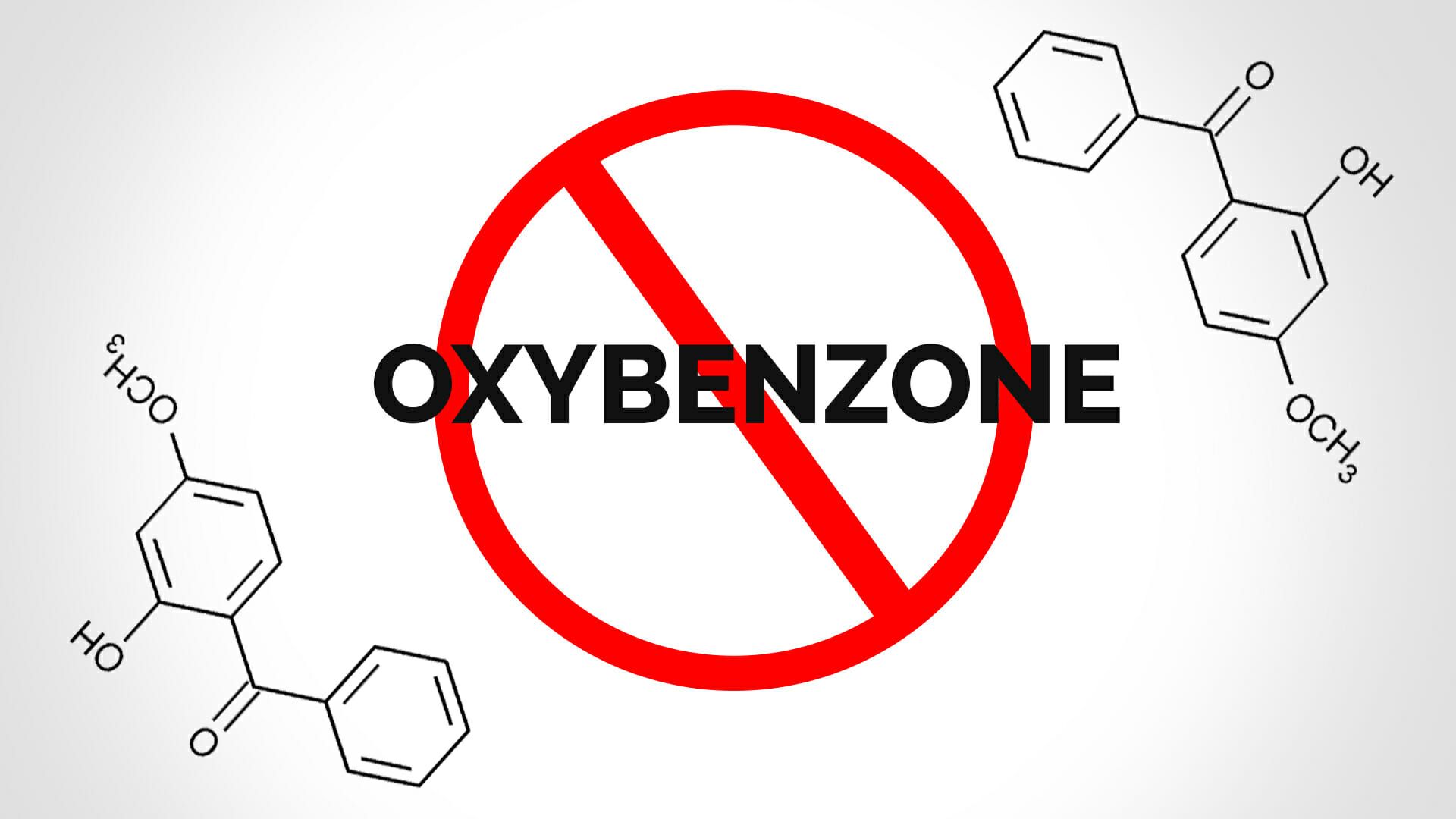While oxybenzone is commonly used to effectively filter UVA / UVB rays, environmental experts cite oxybenzone as a catalyst in coral bleaching and accumulation of toxic levels in human & marine life.
What is Oxybenzone?
Oxybenzone is a benzophenone derivative — it causes photochemical excitation and absorption of energy as a result of UVB and UVA II ray absorption.
What is meant by this scientific jargon may be esoteric, but the key takeaway is: oxybenzone is detrimental to both you, and the environment.
It is a naturally occurring chemical found in a variety of flowering plants, and is an active ingredient in most commonly found sunscreens; approximately 80% of chemical sunscreens contain oxybenzone. Its primary function in sunscreens is to absorb harmful UV lights — while it does do a good job at that, research has shown that it is absorbed into the skin and subsequently stays in our bodies for unknown periods of time.
The EWG has rated oxybenzone as an 8 on their toxicity rating scale — implicating that it is one of the most toxic ingredients found in cosmetic products today. Both the EWG and other prolific toxicology experts have pointed towards signs of the compound as carcinogenic; being linked to hormonal disruption in humans, potentially damaging cells, and leading to skin cancer.
Oxybenzone & Environmental Concerns
Coral bleaching is defined by the loss of a coral’s bright and vibrant colors, shifting into white. How does this relate to oxybenzone?
For a start, oxybenzone contributes largely by essentially turning the water around corals toxic. Studies have shown that oxybenzone exhibits DNA damaging characteristics towards young coral reefs, stunting their growth and development. While this does not directly lead to coral bleaching, it definitely makes them more susceptible to it. Not just this, oxybenzone leads to stress in the corals’ symbiotic partners; algae. Dormant viral infections in algae are awoken, subsequently leading to the expulsion of algae by the corals. This then leads to coral bleaching due to a lack of algae. If all this isn’t enough, the chemical has also been shown to cause corals to make an enlarged skeleton and to become encased in it — researchers state that oxybenzone is “a skeletal endocrine disruptor” in coral.
How does oxybenzone reach the ocean in the first place? The chemical enters the ocean whenever we swim with sunscreens containing the chemical on our skin. Not just this, it also enters the ocean whenever wastewater is drained from our homes after bathing whilst wearing the sunscreen in question.
Which Personal Care Products Contain Oxybenzone?
Sunscreen products are not the only off-the-shelf products found that contains oxybenzone. The prevalence of this toxic substance is rather mind-boggling; this is a small excerpt of the list of personal care products to look out for that contain oxybenzone.
Hair:
- Cleanser
- Conditioner
- Hair Spray
- Shaving Cream
- Hair Removal Waxes
Nails:
- Nail Glue
- Nail Polish
- Polish Remover
- Cuticle Treatment
Makeup:
- Eye Liner
- Brow Liner
- Lip Gloss
- Lip Balm
- Lipstick
- Concealer
- Foundation
- Facial Powder
- Makeup Remover
Skin:
- Body Oil
- Moisturizer
- Foot Odor Control
- Bar Soap
- Hand Sanitizer
- Liquid Hand Soap
- Anti Aging
Oral Care/Hygiene:
- Breath Fresheners
- Mouthwash
- Tooth Whitening
- Toothpaste
Babies:
- Baby Bubble Bath
- Baby Lotion
- Baby Soap
- Diaper Cream
- Baby Wipes
For men:
- Body Spray
- Antiperspirant/Deodorant
- Hair Loss Treatment
- Shampoo
- Beard Care
- After Shave
Safer & Alternative Sunscreen Ingredients to Look for
Non-nano zinc oxide and non-nano titanium dioxide are UV resistant alternatives to oxybenzone that are recognized as GRASE, and acronym for “generally recognized as safe and effective” by the FDA.
Not just this, they come with a variety of other benefits as well. Zinc oxide has antimicrobial properties, which can help wounds heal more quickly. Both zinc oxide and titanium dioxide are non-comedogenic, meaning that they are oil-free and will not clog up your pores — making them an excellent choice for those with sensitive skin.
Whenever shopping for sunscreen products from now on, be sure to look out for labels and products containing oxybenzone; avoid them for the sake of both you, and the environment. All of our Black Girl Sunscreen formulas are created with these exact same safer alternatives to provide exceptional sun protection for both the skin and the environment. Switch to a oxybenzone-free sunscreen today.


